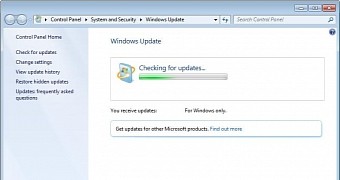Microsoft has silently released an update for the April 2018 Windows 7 monthly rollup KB4093118, most likely in an attempt to address issues caused on a number of PCs.
While the company hasn’t publicly announced a new version of the update, Woody Leonhard says KB4093118 is now checked by default in Windows Update, which means that all systems are being offered this patch. Previously, only some PCs received the monthly rollup, which is more or less surprising given that this kind of updates is supposed to be available for all devices.
As to what’s new in the new version of KB4093118, nothing has been said officially on this. It’s believed, however, that what Microsoft tried to do with the updated patch was address a bug impacting Network Interface Card (NIC) configurations. To prevent this, Microsoft recommended customers to first install security-only patch KB4093108.
Known issue causing BSOD
The new KB page, which is now being listed as last updated on April 13 (the original monthly rollup was published on April 10 when Microsoft shipped Patch Tuesday security fixes to address vulnerabilities in its software) and no longer includes the requirement for KB4093108.
Microsoft says in the release notes that the NIC bug has been addressed with this update and starting with the new version, no other pre-requisites are included.
“Addresses an issue where a new Ethernet Network Interface Card (NIC) that has default settings may replace the previously existing NIC, causing network issues,” one line in the change log reads.
At the same time, this monthly rollup for Windows 7 also lifts an antivirus restriction that was implemented earlier this year and which blocked systems from receiving security updates if they were running security solutions flagged as incompatible.
There are two known issues in this update. One of them triggers a BSOD on systems that don’t support SIMD SSE2 and the other one causes memory leaks on SMB servers. In both cases, Microsoft says it’s working on a fix and will ship it in a future update.

 14 DAY TRIAL //
14 DAY TRIAL //